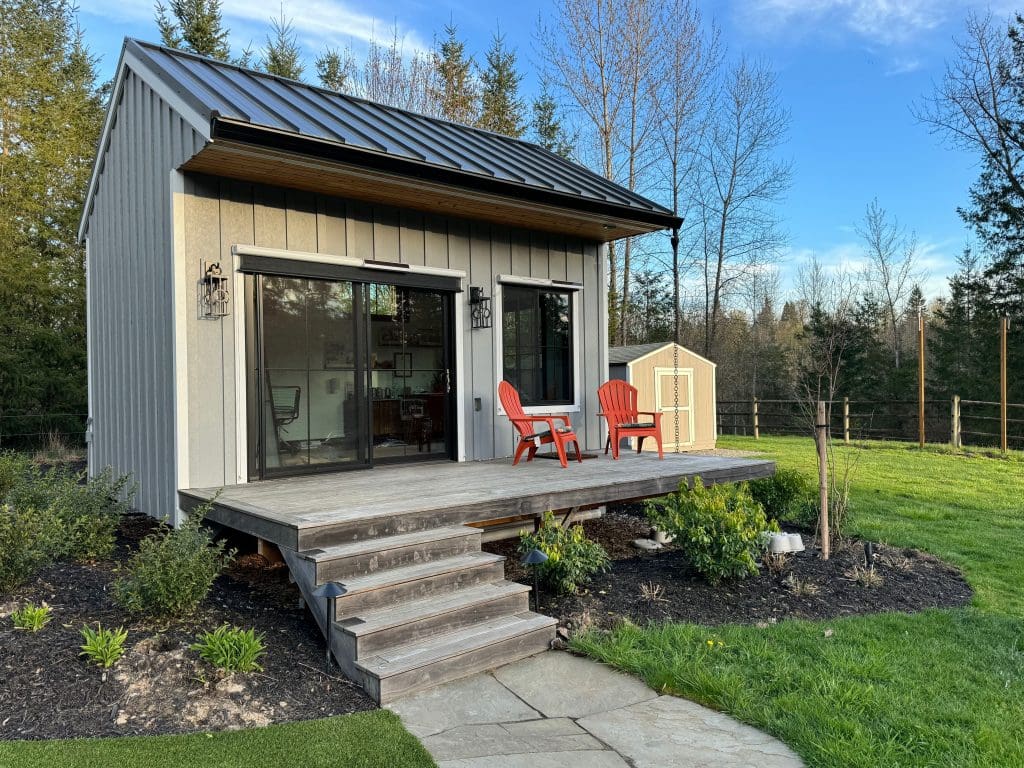
The Path to Green Building Starts at (Our Founder’s) Home
You’ve probably heard us talk about green building, which is one of the founding principles of Pathway Design + Construction. We know it’s possible to limit our impact on the environment while creating beautiful, healthy living spaces—because we do it every day. From repurposing materials to reduce the waste that goes into landfills to utilizing green products that help enhance the health and well-being of our clients, this commitment is reflected throughout all of our projects.
It’s a commitment that applies to my own home as well.
We use green products and practices because we believe in them, of course, but also because doing so allows us to provide first-hand knowledge to our clients. What are the benefits of a particular product? What are the drawbacks? Are there different applications that might not be apparent at first glance? How well does a material hold up over time? What are the realistic maintenance needs?
A home remodel is a significant investment, and we want our clients to be able to make informed decisions—not based on what a brochure or salesperson says, but on real-world experiences. I’ve even invited clients and potential clients to my home so they could see specific products in use rather than seeing them in a showroom.
Does it make a difference? Absolutely. Here are a couple of examples.
Flooring
In my basement, we installed Mafi wood floors with a linseed oil finish. They’re beautiful, and unsealed—the oil penetrates deep into the wood, protecting it from the inside while allowing it to breathe like a tree would in nature. It’s a more natural alternative than a polyurethane coating. So far, so good.
And then my son broke a bottle of red wine on the floor. There was a huge stain, and when it took five or six cleanings for the stain to even start coming out, my wife was asking, “Why would you put this floor in when it just soaks up everything?” I didn’t have a great answer. To be honest, I was wondering the same thing.
Shortly afterward, I talked to a Mafi representative who told me something surprising: If I left the floor alone, he said, the wood would react and eventually remove the red stain on its own. And it actually did just that.
Thanks to this experience, we can say to clients: “Stuff is going to happen—it always does. But this floor had an entire bottle of red wine spilled on it, which made a huge stain, and you’d never know it now. When all is said and done, your floor is going to be amazing.” I can show them right where it happened, and tell them the whole story. Of course, had it ended up the other way, with a big stain that wouldn’t come out, I would tell that story. This approach is designed to help us recommend the best products, not push things that might be green but not great.
(Another positive outcome? My wife no longer questions my choice of flooring.)
Decking
Working with different products in my own homes also gives us the ability to try things that we wouldn’t necessarily try for the first time on a client project, which can lead to uncovering new applications. For instance, I learned about this decking product that I really wanted to try, but I didn’t need to put in a new deck. (I’m committed, but not to the extent where I would rip out my perfectly good deck just to install a different material.)
Instead, I installed it vertically as screening—which worked perfectly, even though that’s not the primary intended use. It’s a simple thing, but experimenting at my house can create unique solutions for our clients.
Speaking of decking, I’m not a proponent of composite decks, but a lot of clients want them. Even though they’re promoted as “no maintenance,” they actually do require some care, and they can get slippery if you don’t choose the right material. How do I know? I have one at my home—but I had to search for decking with a good slip rating to help ensure my aging father would be safe on it. Again, real-world experience matters.
Green building requires partnership
For green building to truly work, though, it’s not enough for us to experiment with products in our own homes. Everyone involved needs to be invested—from clients building or remodeling homes to the companies that make sustainable products, the vendors that sell those products, and the companies like ours that install them.
We’re fortunate to have a partner who helps us immensely on that front: Greenhome Solutions in Seattle. Our relationship goes deeper than just supplier and builder, because their values are in alignment with Pathway’s. Like us, they’re mindful about sourcing and environmental impact, and they’re big believers in testing products so they can share real-world experiences with clients.
We send clients there confident that they’ll be treated how we treat them—with respect, support, and a commitment to finding solutions. Ultimately, green building isn’t about choosing products merely because they’re green; it’s about finding the right green products that work for your lifestyle and your needs.
